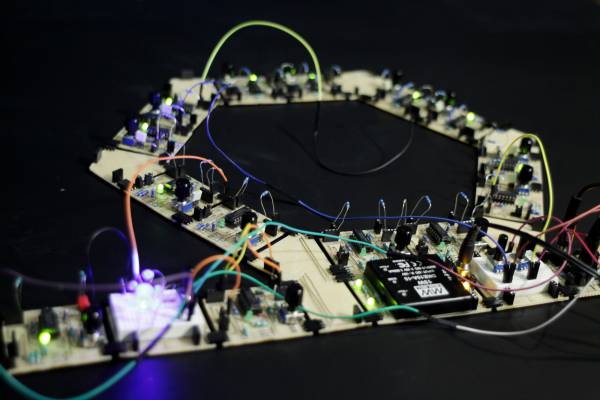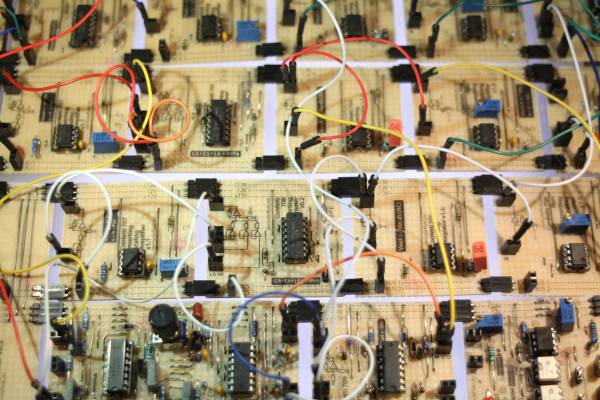Table of Contents
AI Fractals
visible and audible chaotic structures in an analog neural network
by Wolfgang Spahn, 2019
The Installation “AI Fractals” aims at building analog neural networks as part of an analog computer in order to compute fractals, strange attractors and other chaotic structures. These generated patterns and structures shall be sonificated and visualised.
In 1960 Benoit Mandelbrot coined the term fractals to describe infinitely complex patterns that are self-similar across different scales. Prominent examples of these phenomena are his Mandelbrot Set, the Koch snowflake, and the Fibonacci spiral. In the arts, fractals are an important aesthetic composition technique. In the installation “AI Fractals” these fractals were made visible and audible.
The work raised the question of the artistic definition of boundaries in a space which in fact is determined by coincidence. For example strange attractors are defined among others by the fact that they always establish a limiting framework or an according order within which the actual chaos can take place. This means that – at least from a mathematical perspective – haphazardness and chaos are enabled by a framework that creates an order, because without this framework any conceivable chaotic system would rise ad infinitum, and by doing so would escape observation and description. If this thought were transferred to art, it would mean that artistically created chaotic systems would not be visible or audible. Accordingly, the installation raises the question whether the artists themselves create the framework that creates the order, allowing the work to emerge ‘haphazardly’.
Wolfgang Spahn started to develop in 2015 the analog computer Confetti as a modular system in order to achieve a flexible system that performs all kind of computations and operations on base of electrical voltage. Confetti Neurons are special modules to implement an analog artificial neural network into the multi-connect system of the Confetti. Thus analog neural networks can solve very complex operations, such as calculating Fractals and Strange Attractors and at the same time these neurons are especially designed to synthesize sound, too.
The installation merges audio and visuals into synchronous experience using technologies in a way they were not meant to be used. Although video projectors were used, the installation seeks to unmap the norms in audio visual presentations: the square form of the video projector is broken with lenses, Sound signals are used directly to draw the visuals, and in a chaotic feedback the video signals are used to generate the sounds as well.
Setup
At the core of the light and sound installation “AI Fractals” there will be an artificial analog neural network as well as an analog neural computer. These are two hundred small PCB that are put together to a complex system. These boards will be in the center of the room on a glass plate (2x2m). The network will start to calculate in real time. Connected to the output of the system there will be one oscilloscope, a speaker membrane with liquids and some Raspberry Pi Cameras. These devices will visualize the calculated fractals and attractors by projecting the result with three projectors on the walls. Some glass mirrors attached to motors (controlled by the network) will move these projection all over the room. At the same time the network will be audible as well. A mixing desk with some active speaker are connected to some nodes of the network and to some neural oscillators.

